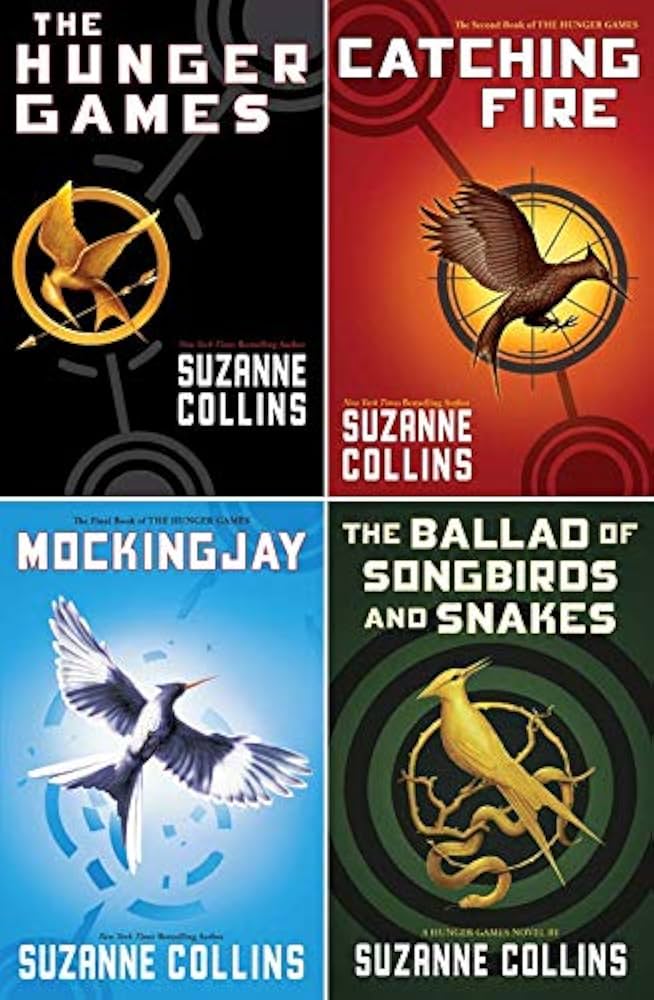Hunger Games Books in Order: A Comprehensive Guide

The Hunger Games series, penned by Suzanne Collins, has captivated millions with its thrilling narrative and dystopian setting. This young adult series, comprising five books, chronicles the journey of Katniss Everdeen and the rebellion against the tyrannical Capitol of Panem. Understanding the correct reading order is crucial to fully appreciating the evolving conflict and Katniss’s transformation. This article provides a detailed guide to the Hunger Games books, exploring various reading orders, plot summaries, and the series’ broader cultural impact.
Reading Order: Chronological vs. Publication
There are two primary ways to approach reading the Hunger Games books: chronologically, based on the in-universe timeline, or in publication order, following the release of the books.
Chronological Order:

This approach prioritizes experiencing the story’s events as they unfold in Panem’s history. It begins with the prequel that explores the origins of the Hunger Games and then progresses to the main trilogy, following Katniss’s story. The chronological order is:
- The Ballad of Songbirds and Snakes
- Sunrise on the Reaping
- The Hunger Games
- Catching Fire
- Mockingjay

Publication Order:
This method reflects the order in which Suzanne Collins released the books. It begins with the original trilogy, introducing Katniss Everdeen and the core conflict, and concludes with the prequel offering a backstory to the oppressive regime. The publication order is:
- The Hunger Games
- Catching Fire
- Mockingjay
- The Ballad of Songbirds and Snakes
- Sunrise on the Reaping
Both reading orders have their merits. Chronological order provides a more complete historical understanding of Panem, while publication order mirrors the author’s intended narrative flow, building suspense and allowing the reader to experience the impact of the original trilogy before exploring its origins. The choice ultimately rests on personal preference.
The Books in Detail: Plot Summaries and Themes
Each book in the Hunger Games series offers a unique narrative perspective and delves into diverse themes, such as survival, rebellion, power, love, and the consequences of war and oppression. Below, we examine each book individually.

The Ballad of Songbirds and Snakes (2020)
This prequel takes us back 64 years before the events of the original trilogy, offering a glimpse into the formative years of President Coriolanus Snow. Set during the 10th Hunger Games, the story centers on a young Coriolanus, a privileged student from the Capitol, and his assigned tribute from District 12. The novel explores the genesis of the Hunger Games, revealing the societal structures and political machinations that led to the dystopian world depicted in the main trilogy. It examines the early stages of Snow’s ambition and how he manipulates the system for his own gain, ultimately shaping his ruthless personality as the tyrannical president we meet in the original books.
Sunrise on the Reaping (2025)
This recently released prequel shifts the focus to Haymitch Abernathy, the mentor to Katniss and Peeta in the original trilogy. The narrative unfolds during the 50th Hunger Games, focusing on Haymitch’s participation as a tribute from District 12. This installment delves into Haymitch’s younger years, showcasing his resilience and resourcefulness in navigating the deadly arena. The story provides insight into the Games’ enduring impact on individuals and explores themes of survival, loyalty, and the lasting consequences of participating in the annual televised spectacle.
The Hunger Games (2008)
This is where Katniss Everdeen’s story begins. Living in the impoverished District 12, Katniss volunteers as tribute to save her younger sister, Prim. The book follows her harrowing journey into the Hunger Games, a televised battle royale where children fight to the death. It introduces the complex relationship between Katniss and Peeta Mellark, another tribute from District 12, their struggle for survival, and their use of unconventional strategies to garner public sympathy. The novel explores themes of survival, the dehumanizing nature of the Games, and the beginning sparks of rebellion against the Capitol.
Catching Fire (2009)
Following their victory, Katniss and Peeta find themselves thrust into a different kind of battle – one of political manipulation and manipulation by the Capitol. The enforced relationship between Katniss and Peeta is used as propaganda to quell growing unrest among the districts. The book introduces the concept of the Quarter Quell, a special edition of the Hunger Games with increased stakes. Katniss must once again confront death while also becoming an unwilling symbol of rebellion, further escalating the conflict with the Capitol.
Mockingjay (2010)
This final installment sees Katniss transformed from a reluctant participant into the face of a full-scale rebellion against the Capitol. Forced to navigate the complex dynamics of the revolution and lead the districts in a war against President Snow, Katniss faces moral dilemmas and personal sacrifices. The book deals with the brutal realities of war and the psychological scars left behind, highlighting the cost of fighting for freedom and the challenges of rebuilding a broken society.
Suzanne Collins: Author Biography and Inspirations
Suzanne Collins, the author behind the Hunger Games phenomenon, has a background in children’s television, which may have influenced the series’ visual and narrative style. Her work draws inspiration from various sources, including Greek mythology (the tribute system echoes elements of the Minotaur myth), Roman history (the gladiatorial combat), and the realities of war and political oppression. This blend of fictional elements and historical parallels contributes to the series’ gripping portrayal of a dystopian future and resonates with readers on multiple levels. Her work is characterized by its compelling characters, sharp prose, and exploration of complex moral and ethical issues.
Cultural Impact and Adaptations
The Hunger Games books and subsequent film adaptations have significantly impacted popular culture. The series’ exploration of social inequality, political oppression, and the power of media has sparked conversations on relevant contemporary issues. Furthermore, the books and movies have generated substantial fan communities, literary discussions, and even influenced fashion trends and social activism.
The Hunger Games film franchise, starring Jennifer Lawrence, has been incredibly successful at the box office, further cementing the series’ place in popular culture. The recent release of The Ballad of Songbirds and Snakes film adaptation further extends this cultural legacy, bringing new audiences to the world of Panem and providing alternative insights into the series’ core themes. These adaptations have only amplified the discussions and engagement surrounding the Hunger Games universe.
Conclusion
The Hunger Games series offers a compelling and thought-provoking journey into a dystopian world. Whether reading chronologically or by publication order, readers will discover a captivating story exploring intricate themes and a world full of complex characters that will leave a lasting impact long after finishing the final page. Its influence extends beyond the realm of fiction, prompting conversations and generating a wide array of creative interpretations through fan communities and adaptations.